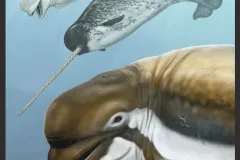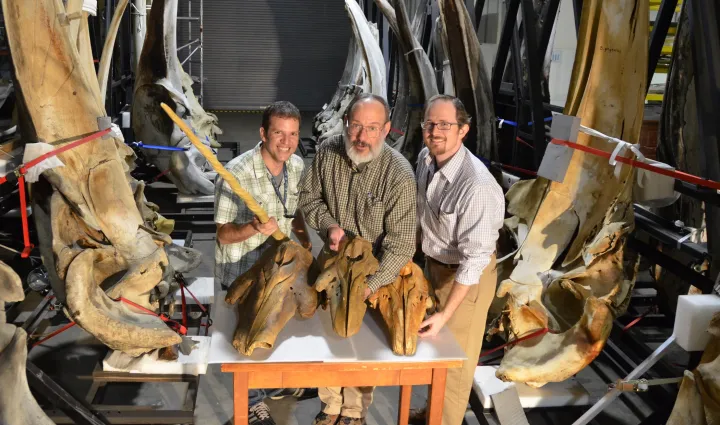Smithsonian Scientists Describe a 'New' Fossil Whale

Monodontids, the group of whales that includes the belugas and narwhals swimming our ocean today, are emblematic symbols of the Arctic. However, their fossil record, although scarce, suggests that these animals' ranges could have been much broader. Fossil monodontids have been previously found in late Miocene deposits in Baja California, Mexico, the early Pliocene of Belgium and the eastern coast of North America.
Now, in this month’s issue of the Journal of Vertebrate Paleontology, Nick Pyenson and I describe a new species of fossil monodontid from early Pliocene deposits (around 3-4 million years old) in Virginia and North Carolina. The fossil, dubbed Bohaskaia monodontoides, honors David J. Bohaska of the National Museum of Natural History (NMNH) and member of the Pyenson Lab, for his knowledge and dedication to the paleontological heritage of the eastern seaboard of the United States.
Bohaskaia, as well as other fossil monodontids, have been found in more temperate latitudes than their extant relatives. We argue that these findings imply that this group, now restricted to Arctic and sub-Arctic waters, was once tropical to subtropical in distribution.
The specimen that serves as the basis for the description of Bohaskaia has a long history here at NMNH. It was originally found in 1969 at a locality known as Rice’s Pit in Hampton, Va. Frank C. Whitmore, Jr., one of the founding members of the Society of Vertebrate Paleontology and longtime member of the Smithsonian community through the U.S. Geological Survey, recognized its monodontid affinities, and especially its similarity with belugas, which he mentioned in a few publications. Frank described it simply as an undescribed species of Delphinapterus (the same genus as the modern beluga), and it remained mostly unstudied for many years.
When Nick arrived at the museum in 2009, he and I were searching in the collections for a collaborative project on cetacean anatomy. Nick suggested that we examine the specimen thought to be an undescribed species of Delphinapterus, which he had seen as a plaster replica several years earlier as a graduate student. We made a trip to the Smithsonian's Museum Support Center in Suitland, Maryland, to compare the specimen side by side with beluga and narwhal skulls in NMNH’s Vertebrate Zoology collections, overseen by Charley Potter and Jim Mead. Our study confirmed the monodontid affinities of Bohaskaia monodontoides (hence its specific epithet), but we also recognized it as a more primitive, unique member of the group.
Editor's Note: A description of these research findings is available in Spanish on the Caribbean Paleobiology Blog.
Velez-Juarbe, J., and N. D. Pyenson. 2012. Bohaskaia monodontoides, a new monodontid (Cetacea: Odontoceti: Delphinoidea) from the Pliocene of the western North Atlantic Ocean. Journal of Vertebrate Paleontology 32(2):476–484.


